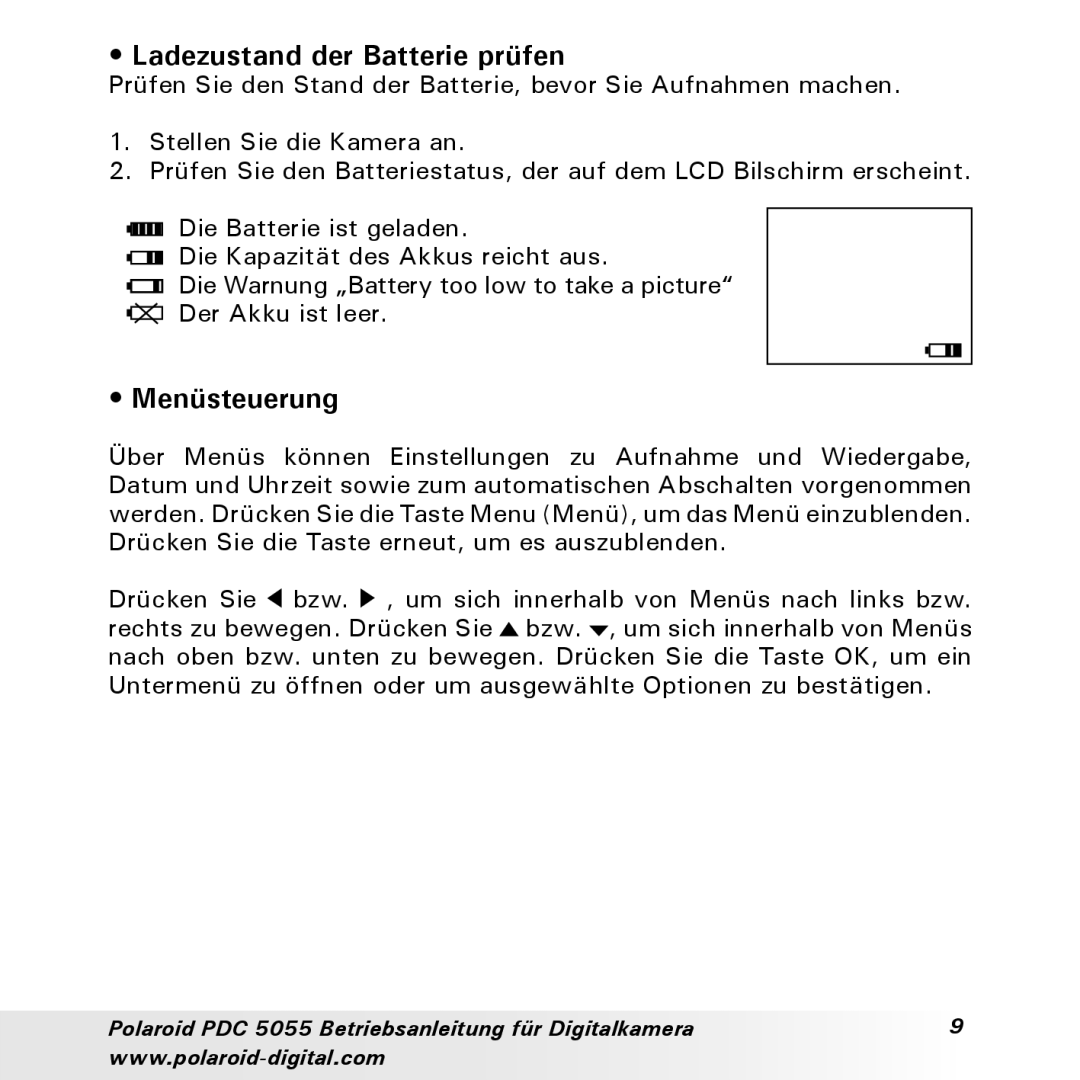PDC 5055 specifications
The Polaroid PDC 5055 is a compact digital camera that made waves in the early 2000s for its impressive features and user-friendly design. Targeted at both casual users and photography enthusiasts, the PDC 5055 was designed to capture high-quality images with its notable specifications.One of the main features of the Polaroid PDC 5055 is its 5-megapixel sensor, which allowed users to take sharp and vibrant photographs. This resolution was considered impressive during its time, enabling users to print larger images without losing quality. The camera also featured a 3x optical zoom, providing flexibility to capture subjects at varying distances while maintaining clarity. Additionally, the inclusion of digital zoom further enhanced its versatility, allowing for enhanced cropping.
The PDC 5055 was designed with an easy-to-use interface, making it accessible for beginners and experienced photographers alike. It featured a 1.8-inch LCD screen that provided users with a clear viewfinder, facilitating composition and focusing. The display was also useful for reviewing images after they were taken, adding to the overall user experience.
In terms of connectivity, the Polaroid PDC 5055 came equipped with USB ports, allowing for straightforward uploading of images to computers for editing or sharing. This connection method was particularly popularized as it led to quicker transfer speeds compared to earlier methods like serial connections.
The camera also utilized SmartMedia memory cards for storage, which were a common standard at the time. Users could easily swap out cards to extend their shooting capabilities without worrying about running out of space. Additional features included various exposure modes, including portrait, landscape, and night scenes, giving users the ability to adjust settings for different environments.
Durability was another characteristic that set the Polaroid PDC 5055 apart. Its robust build allowed it to withstand the occasional bumps and drops, making it an ideal choice for travel and outdoor photography.
In summary, the Polaroid PDC 5055 combined a user-friendly interface with solid performance features, including a 5-megapixel sensor, 3x optical zoom, and flexible connectivity options. This digital camera played a significant role in the evolution of consumer photography, making quality imaging accessible to a broader audience.

